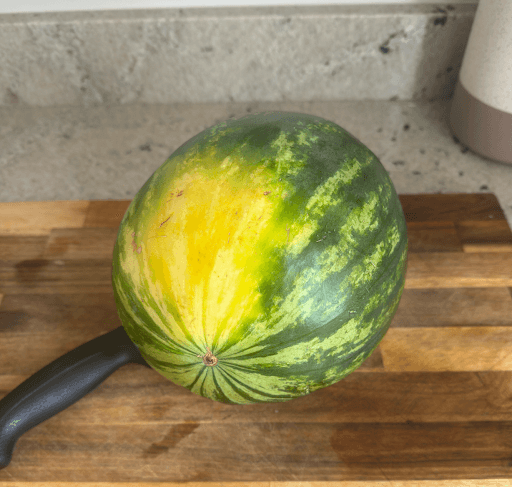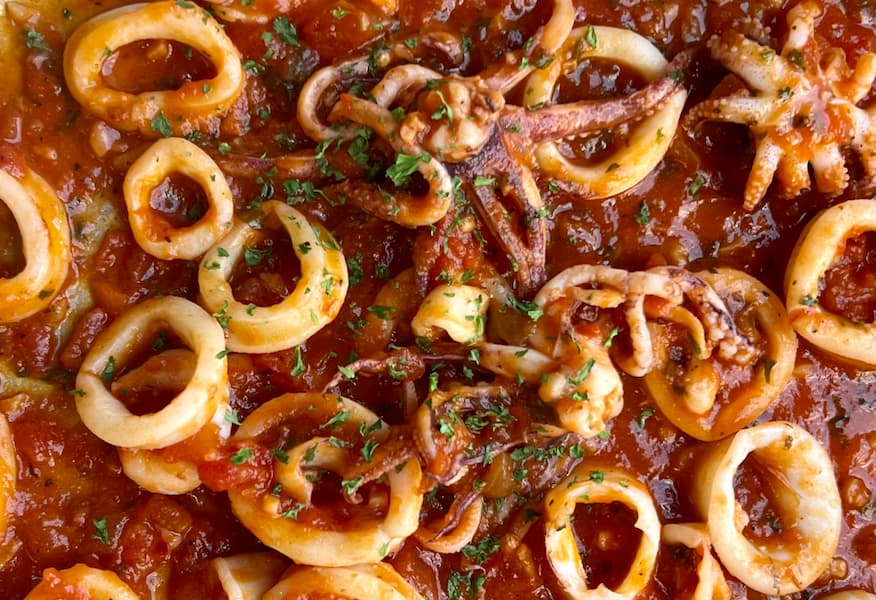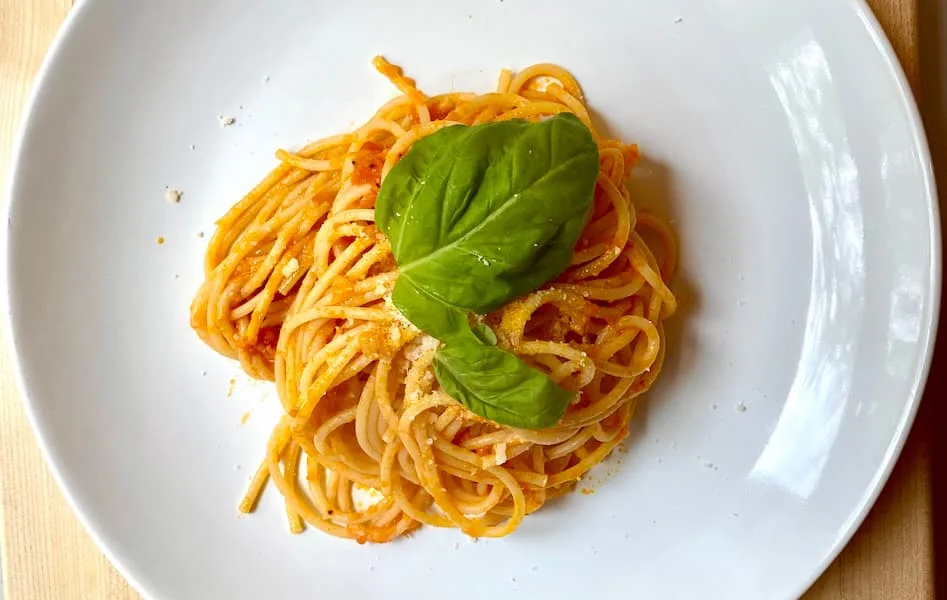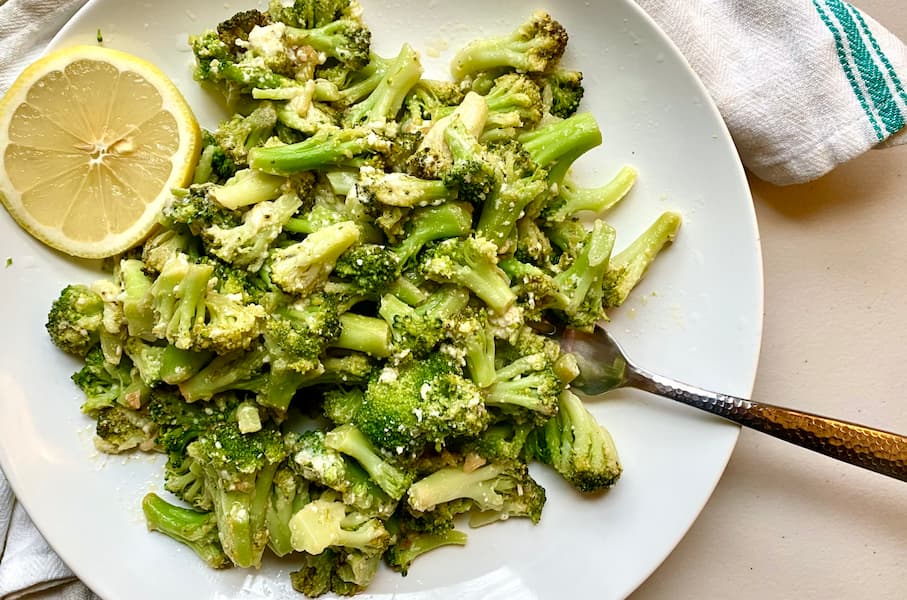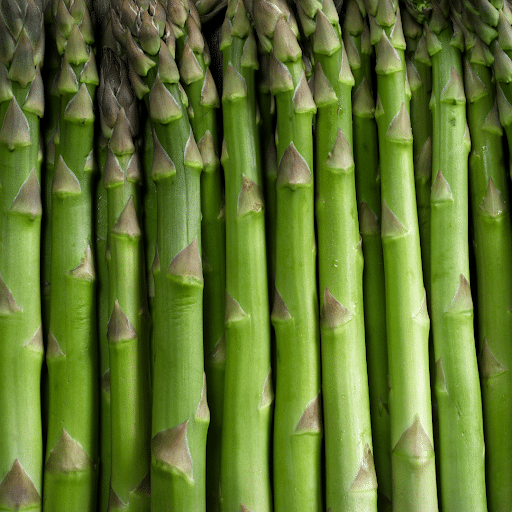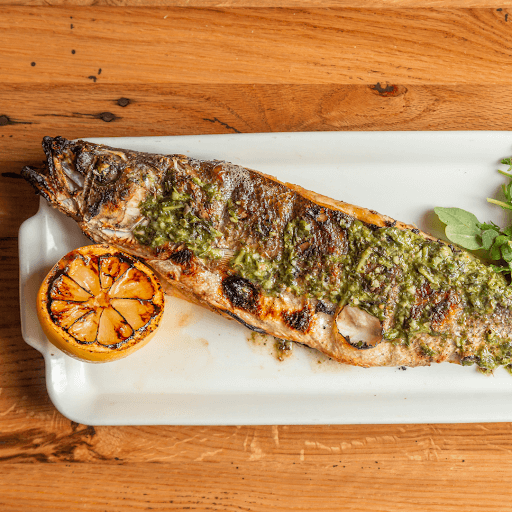On hot summer days, I eat a lot of fresh watermelon. Nothing beats the heat better than a juicy slice of watermelon.
Summer is when watermelon is at its best: juicy and sweet.
Whether I’m picking them up from the grocery store or the farmer’s market, a good watermelon is a quintessential part of summer.
Watermelon is an excellent choice for a healthy summertime treat. It’s a nutrient-dense fruit, low-calorie food. A one-cup serving of raw, diced watermelon contains 46 calories and about 0.9 grams of protein.
But, like my love affair with bananas, I often buy much more than I can eat. Oops. (Side note: Got overripe bananas? Make my banana bread!)
There were a few times last summer when I found myself opening a container of cut melon, wondering, “Is this overripe watermelon safe to eat?”
Whether you’re buying whole watermelon or pre-cut watermelon, there are a few telltale signs to know when it’s gone bad.
But first, let’s discuss safe storage techniques so you don’t waste much food.
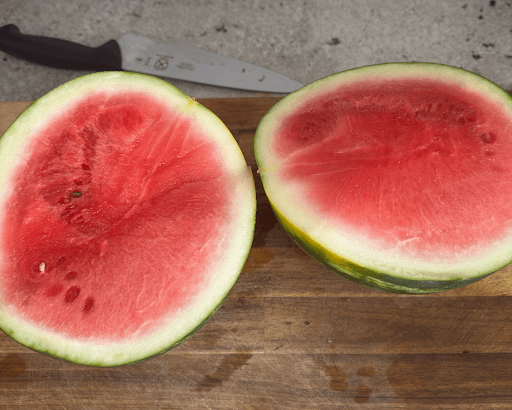
How to Know if a Watermelon is Ripe
The easiest way to tell if a watermelon is ripe is to knock on it. A good rule of thumb is to listen for a hollow sound. Please give it a good whack and listen closely. If it sounds hollow, you’re good!
I also look for a yellow spot on the underside where it rested on the vine. This is called the field spot.
Another good indicator of ripeness is a thick rind on a watermelon. A thick rind develops naturally on a watermelon as it grows. This watermelon rind helps protect the juicy flesh inside from insects, damage, and dehydration.
How to Store Whole Watermelon
Once I’ve chosen a watermelon and brought it back home, I store the uncut watermelon at room temperature, out of direct sunlight. An uncut watermelon can stay fresh for up to two weeks with proper storage!
How to Store Cut Watermelon
There are several ways to store watermelon. These methods work for both seeded and seedless watermelon. Please note that you should always cut your watermelon with clean knives to prevent the spread of bacteria.
- The Wrap Method: For larger pieces of watermelon, I tightly wrap the exposed cut side with plastic wrap.
- The Airtight Container Route: Freshly cut watermelon loses moisture and flavor when exposed to air. The best way to combat this is to tightly wrap the cut end (the exposed flesh) with plastic wrap. Then, place the wrapped watermelon in a shallow airtight container.
- The Paper Towel Trick: I place smaller cut watermelon pieces or cubes on a paper towel-lined plate. The paper towel absorbs any excess moisture that can lead to fogginess.
The Watermelon Ripening Process
- Sugar Production: As a watermelon grows, the leaves use sunlight to create sugars through photosynthesis. These sugars are then transported to the developing fruit.
- Starch Conversion: Inside the watermelon, starches stored in the flesh start converting into sugars, increasing the fruit’s sweetness.
- Color Change: Chlorophyll, the green pigment in the rind, breaks down as the watermelon ripens. This allows pigments like lycopene, which is responsible for the red color, to become more visible.
- Seed Development: Seed maturity plays a role in ripening. Once the seeds are viable, the watermelon enters its final ripening stages.
- Internal Changes: Enzymes break down cell walls in the flesh, making the watermelon softer and juicier.
Signs A Whole Watermelon Has Gone Bad
There are a few signs you can look for to see if a watermelon is bad or overripe:
- The rind: A ripe watermelon should have a firm rind that is not easily dented. The rind of an overripe watermelon will be soft or mushy. You should also avoid watermelons with any cuts, bruises, or cracks in the rind, as these can be entry points for bacteria.
- The color: A ripe watermelon should have a yellow spot on its underside where it rested on the ground as it grew. This spot should be creamy yellow, not white or brown. If the watermelon looks white or brown, it may mean that it was picked too early or that it is starting to go bad.
- The weight: A ripe watermelon should feel heavy for its size because it is full of water. A watermelon that feels light for its size is likely overripe or dry.
- The sound: When you thump a ripe watermelon, it should sound hollow. If it sounds dull, it is likely overripe or spoiled.
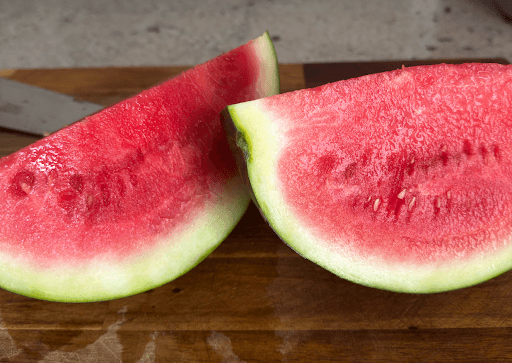
Signs A Cut Watermelon Has Gone Bad
- Color of the Flesh A good watermelon should have deep pink or vibrant red flesh. Any noticeable dark spots (black or brown) are a red flag. Avoid any soggy spots.
- Texture of the Watermelon: The flesh should be crisp and juicy. If it’s mushy or slimy, it’s past its prime. Never eat a mealy watermelon!
- Smell: This is a big one. A fresh watermelon has a pleasant, sweet aroma. Any sour or fermented smells are an automatic dealbreaker.
- Excess moisture: While watermelon is juicy, excessive liquid pooling around the cut flesh can indicate spoilage.
My Favorite Watermelon Recipes
Now that we’ve gotten to the bottom of this melon matter, let’s talk about the delicious ways you can enjoy it. Try making one of these next time you find yourself with a bunch of ripe melons.
- Watermelon and Feta Salad: I love how simple this is. Combine watermelon chunks with feta cheese, a drizzle of olive oil, fresh mint, and a sprinkle of black pepper for a super flavorful side dish. Add pistachios if you want a little crunch.
- Watermelon Sorbet: On a low-calorie diet? This is a healthy and delicious alternative to traditional ice cream. Simply blend frozen watermelon chunks, a squeeze of fresh lime juice, and a touch of honey for a sweet and refreshing sorbet.
- Watermelon Salsa: Have you had enough of summer tomatoes? Watermelons offer a vibrant and refreshing take on traditional salsa. Combine cubed watermelon with chopped red onion, jalapeno (if you like a kick), lime juice, fresh cilantro, and a pinch of salt. Enjoy it with chips, grilled fish, or tacos.
- Frozen Watermelon Popsicles: Puree the edible part of the fruit with honey or lime juice, pour the mixture into popsicle molds, and freeze for a delightful summertime snack.
- Fruit-Infused Water: Infuse your water with fresh watermelon chunks to add a touch of summer. Combine watermelon with other fruits like cucumber, orange, or berries for a refreshing and hydrating drink.

